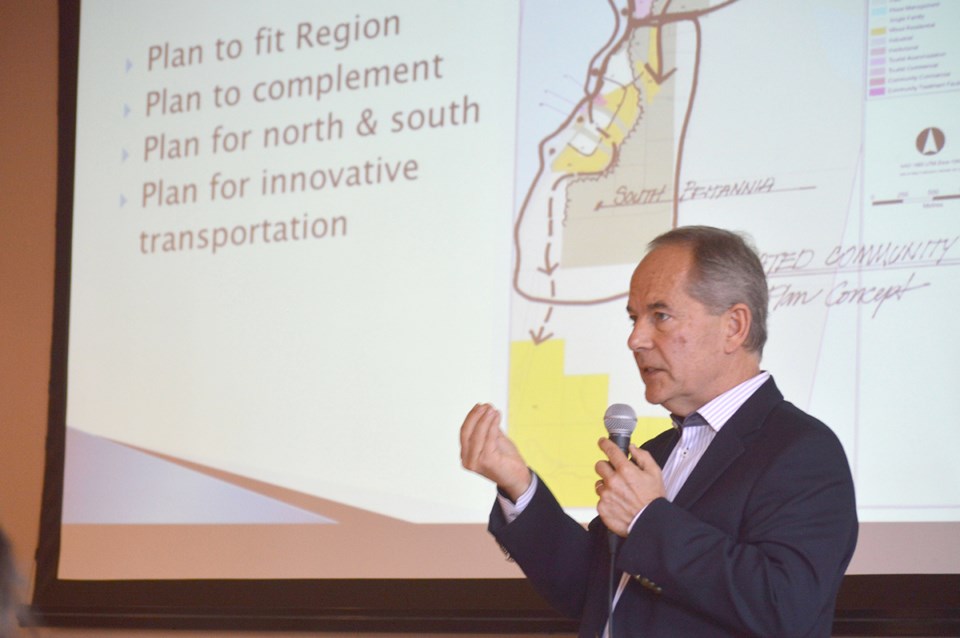The challenges that growth poses to infrastructure such as the highway was on people’s minds at Howe Sound Community Forum on Friday, Oct. 16.
The meeting represented a gathering of local, regional and First Nations representatives from around Howe Sound – including planners.
At the morning session, participants listened to a number of development proposals, which included not only projects slated for this area such as South Britannia Beach and the Squamish Oceanfront Development, but from other communities in the area. In general, these consist of mixed-use developments that include a large component of relatively high-density residential, which could alleviate the pressures on demands for new housing in the Squamish area.
Mayor Patricia Heintzman, who chaired the meeting, summed up the dilemma resulting from adding so many residential units and what this might mean for infrastructure such as the Sea to Sky Highway.
“The province spent $700 million on that road, and it’s already at its limit,” she said during a question-and-answer period.
The mayor was not the only one that brought up the issue, as outgoing MP John Weston echoed her concerns, suggesting it will be a challenge for any government.
“We have to make sure we focus on the transportation issue because it’s going to be gargantuan,” said Weston, who was defeated in Monday’s federal election by Liberal Pam Goldsmith-Jones.
Michael von Hausen, president of MVH Urban Planning and Design, which is behind the South Britannia Beach project, agreed that the issue of how transportation can be managed in the corridor in light of an influx of residents will present a complex challenge.
During his presentation, he referred to the need to be sensitive to the transportation corridor, as well as Howe Sound.
“Urban design is about three things: context, context and context,” he said.
Von Hausen emphasized that the plan he presented at the forum is a year old and that he is in the process of updating the proposal to go before the regional district.
“In the next two months, we’ll have a finalized plan,” he added.
Others at the meeting raised points about the need for more comprehensive plans for the region, as well as the need for specific measures to protect water, apply more effective treatment to sewage and incorporate measures to take into account the terrain of the valley, with its steep slopes and flat bottoms.
Representing Matthews Southwest and Bethel Lands Corp. (now Newport Beach Developments Limited Partnership), Jenni Chancey and Caroline Lamont gave an overview of their plans for Squamish’s oceanfront, which they said was designed to complement rather than take away from the existing downtown, while taking into account green space for the area.
“This is not a suburban… this is definitely an urban development,” Lamont said.
Other items slated for the day’s agenda included a presentation by Stephen Foster of the David Suzuki Foundation on an initiative with the Vancouver Aquarium and the Squamish Nation, proposals for the George Hotel in Gibsons and Sewell’s at Horseshoe Bay, derelict vessels around Howe Sound, an update on the District of Squamish’s marine planning and restoration at the Squamish Estuary.



